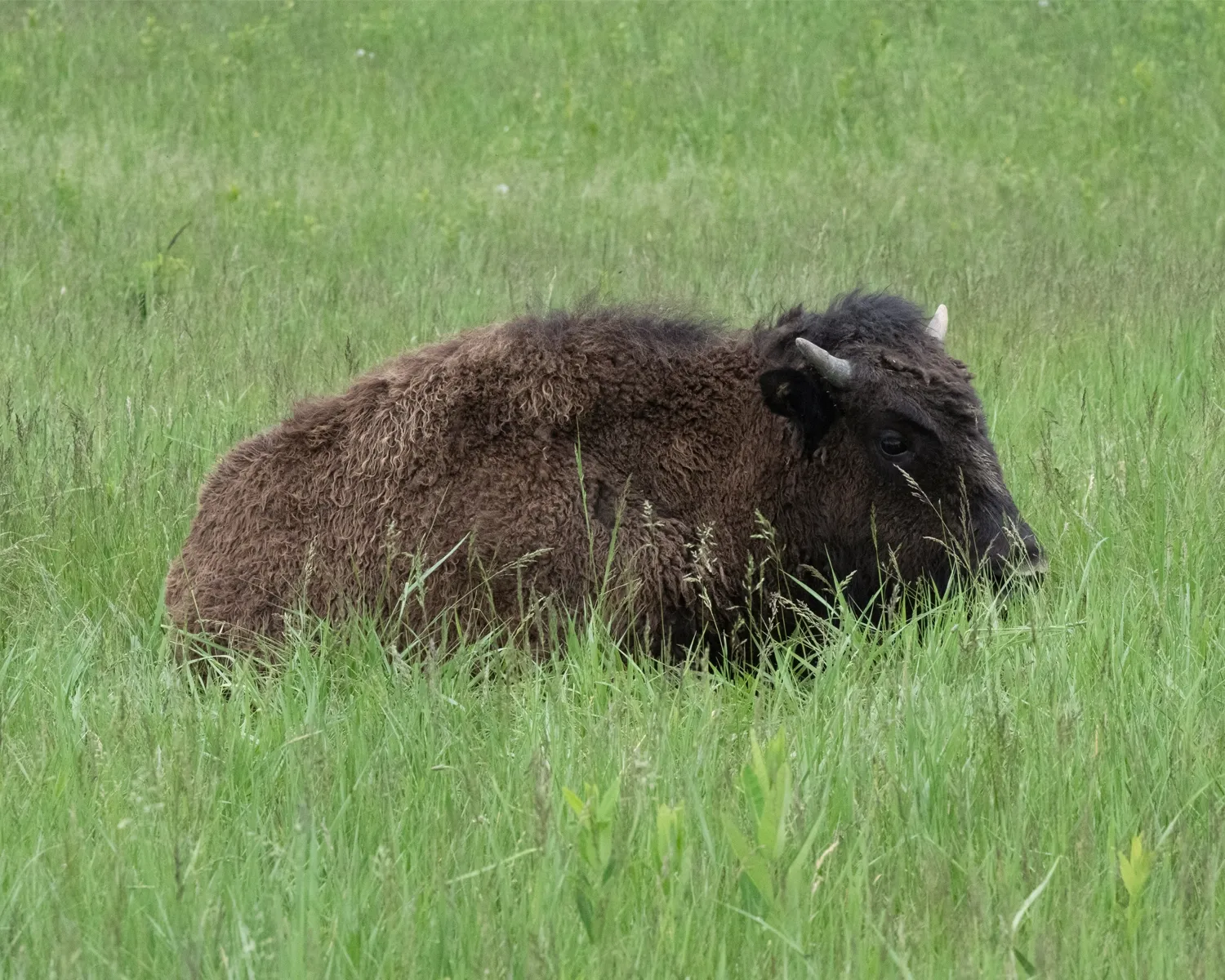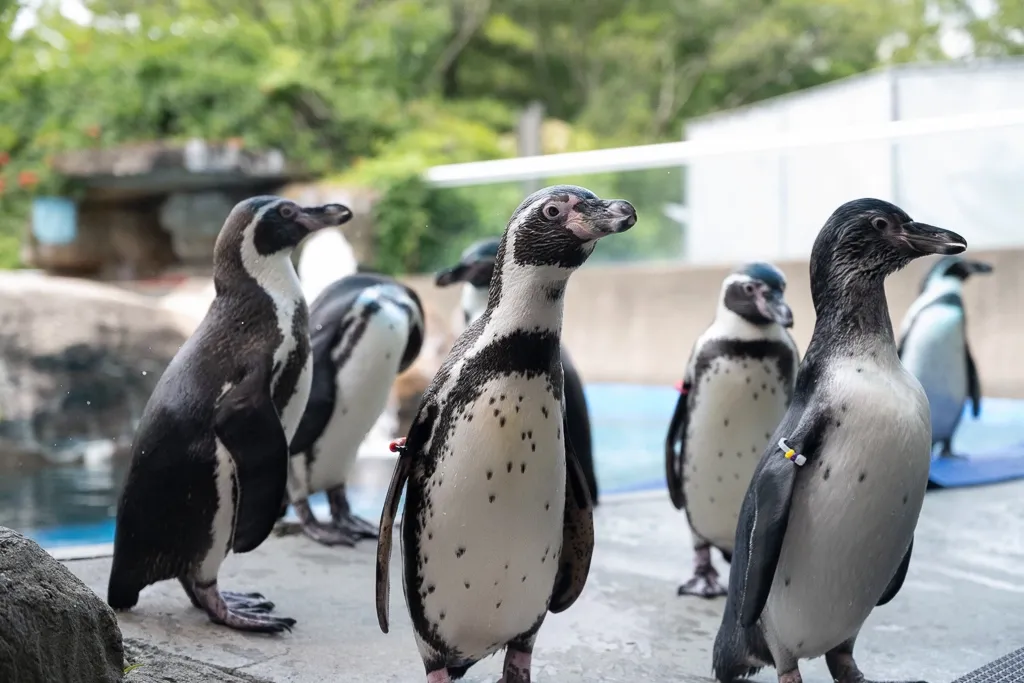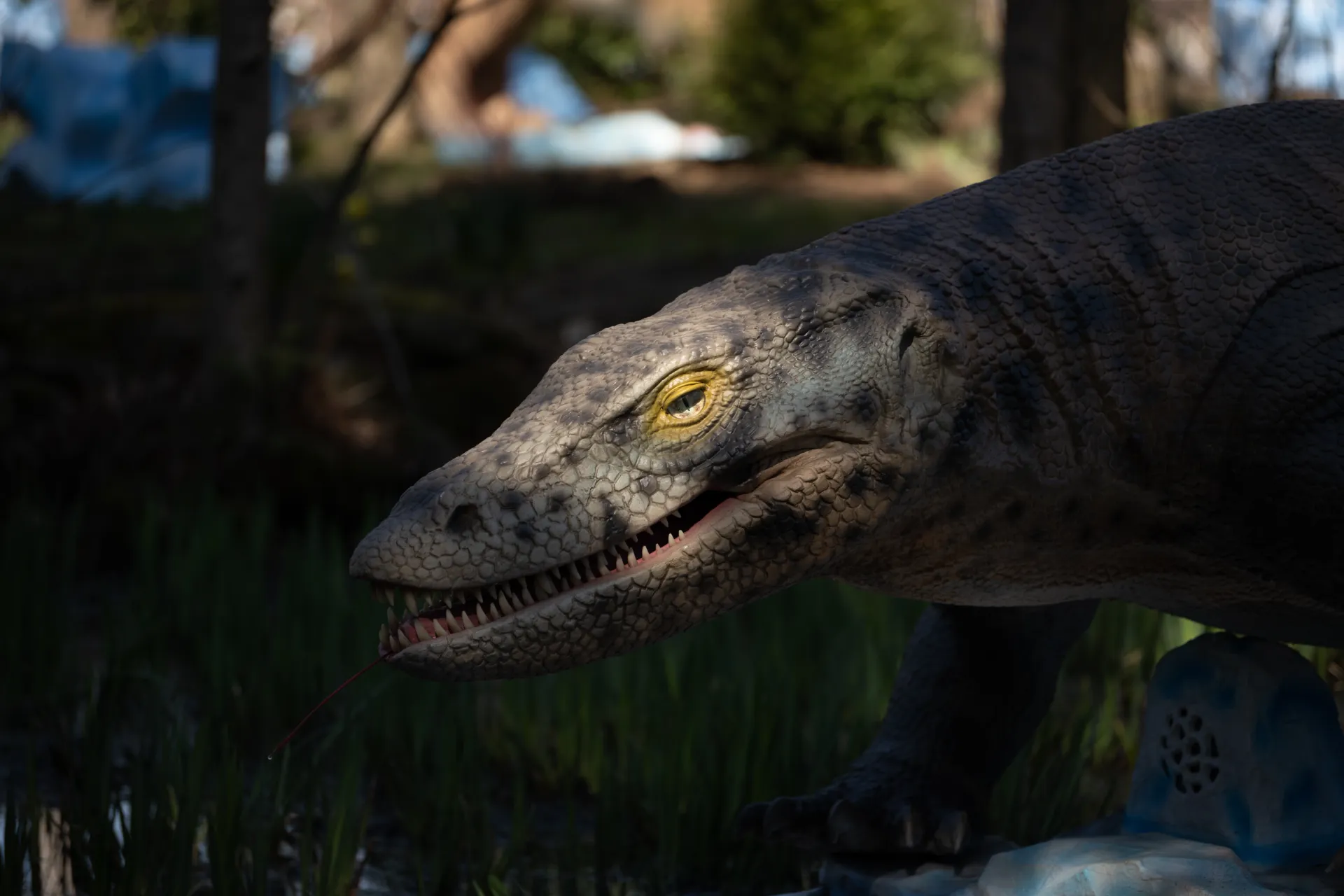More Cool Facts About the Denizens of the Past
July 10, 2025
Have you visited Ice Age: Frozen in Time yet at the Pittsburgh Zoo & Aquarium? Don’t flake out – there is no better way to chill out during this sweltering summer! Reverse the calendar millions of years and experience a frigid Earth populated by some of the world’s most superlative animals. More than 50 animatronic models bring these wonders of the Ice Age back to life. Prepare to turn back the clock with these cool facts about Ice Age animals:
1. Fangs for the memories.
With its enormous dagger-like teeth, the Smilodon, or saber-toothed cat, is one of the most familiar faces of the ice age. Living in North and South American forests, these cats varied in size according to species, ranging from 150 to 1,000 pounds. Large canine teeth hung from both sides of the Smilodon’s mouth. To stab its prey, the cat had to open its mouth more than 90 degrees. It surprised its prey by leaping from trees and sinking their teeth into unsuspecting bison, giant sloths, mammoths, horses, pigs, or whatever was available. A changing climate — and the resulting lack of prey — most likely spelled the Smilodon’s end.
2. A rhino in a winter coat.
Weighing around three tons, standing six feet tall, and sporting a set of two horns, the wooly rhinoceros looked a lot like today’s rhino. However, the major difference was its thick fur. Its fossils have been found in Spain, Siberia, and South Korea and the woolly rhino sometimes appears in ancient cave paintings. Melting permafrost in Serbia has revealed a number of well-preserved Ice Age creatures, including the woolly rhino – including one with preserved intestines, fur, and horns. Humans and woolly rhinos likely interacted, although evidence does suggest that humans sometimes hunted the prehistoric beasts. Scientists think that changing climate — and not overhunting — led to the woolly rhino’s extinction.
3. Ice age icons.
Instantly recognizable, the woolly mammoth could be the cover mammal for Ice Age megafauna. Mammoths lived throughout North America, ranging from Canada down to Honduras. Standing 12 feet tall and weighing six to eight tons, the woolly mammoth grazed the northern steppes of Ice Age North America using its colossal, 15-foot curved tusks to dig under the snow for food and defend itself against predators. The mastodon was shorter and stockier than the mammoth, and the shape of its teeth indicate that the mastodon did not graze on grass like the mammoths, but ripped off leaves and entire tree branches for food. Nearly all mammoths and mastodons were wiped out in the great megafauna extinction 10,000 years ago, but archeologists have dug up remains showing that lone bands of mammoths still roamed arctic islands as recently as 4,500 years ago, at the time the Egyptians were building the pyramids.
4. Frankly, my dear, I don’t give a dam.
Ice age North America was home to the largest rodent that ever lived. It measured up to seven feet long, weighed more than 250 pounds and its two front teeth (incisors) were as long as bananas! With oversized front teeth and a flat tail, it was similar in appearance to modern beavers. However, the giant beaver is more closely related to the capybara. The incisors and molars of the giant beaver were rounded and blunt, lacking the power to fell large trees, and their brains were relatively smooth, a sign that they weren’t intelligent enough to construct dams.
5. A most unusual bird.
The Dodo had a large head, hook-tipped bill, and short legs. Its short wings and underdeveloped pectoral muscles were not strong enough to fly. The name “dodo” comes from the Dutch word dodoor, which means sluggish. However, scientists think it could have run at fast speeds. Research on the bird’s anatomy suggest it was moderately intelligent and had excellent smelling ability, which is unusual among birds who usually rely on their vision. Dodos lived on the Indian island of Mauritius and are related to modern pigeons. Living on an island and without the need for flight to escape predators, dodos adapted to grow larger and eliminated their ability to fly. (Other birds who once flew but evolved into non-fliers include penguins and ostriches.) However, there was one predator the dodo could not escape. The dodo was quick to trust the human settlers that made their way to its island and who eventually caused its extinction.
6. The terror bird.
With the head of an eagle, crushing beak, clawed wings, the legs of an African ostrich, and claws as big as those of a Velociraptor, terror birds (scientifically, Phorusrhacidae) were an extinct group of carnivorous birds that were an apex predator of ancient South America. They could weigh up to 300 pounds and easily tear through prey. It is also thought that males had larger beaks, a sign of vitality to attract females during mating season.
7. A little horse.
Horses are native to North America. They were among the most abundant mammals that lived during the ice age. The diminutive horse, Mesohippus roamed western North America. The little horse was about the size of a sheep, about 20 inches tall. It had three toes on each foot compared to the modern horse which has one. Mesohippus was also probably more of a browsing herbivore compared to the modern grazing horse.





